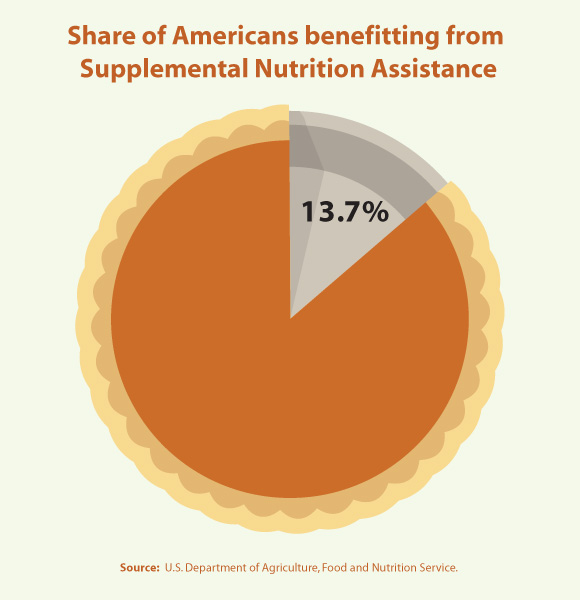This Thanksgiving, 42.4 million Americans – 13.7% of the population — are receiving benefits from the Supplemental Nutrition Assistance (SNAP) program, more commonly known as Food Stamps. The number is up from 36.2 million last year and has risen by 15 million since the start of the recession in December 2007.

People with limited assets are typically eligible for SNAP if they earn a poverty-level income.
There are many reasons for the increase in the number of SNAP recipients. First, the American Recovery and Reinvestment Act passed last year widened eligibility for Supplemental Nutritional Assistance so that more adults without dependents could qualify. The Recovery Act also increased benefits, providing additional relief to some of the country’s poor individuals and families, while at the same time serving as an effective economic stimulus. The assistance provided by SNAP is like a direct cash transfer, which recipients spend quickly, returning to their local economies.
In addition to widened eligibility, the increase use of Food Stamps reflects a higher poverty rate and increased unemployment. Earlier this year, the Census Bureau reported that the poverty rate rose from 13.2% in 2008 to 14.3% in 2009. As EPI Economists noted in an analysis of that data, “When unemployment skyrockets and job seekers cannot find work, incomes fall and poverty rises.”
